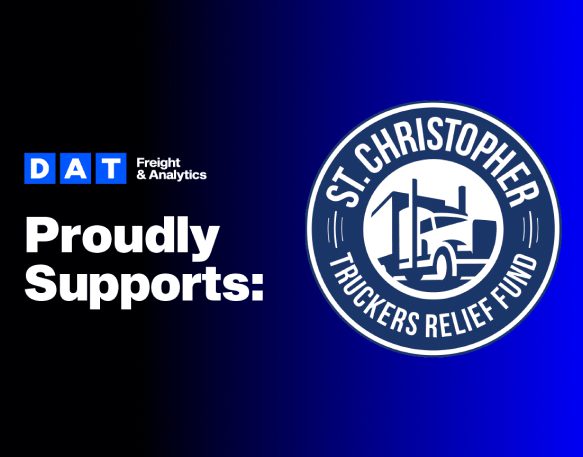
The tree of market conditions is bearing ripe fruit for shippers. With rates falling, carriers can’t demand higher prices – there’s room to negotiate and wiggle, which means you’ve got all the cards you need to play some winning hands. There’s good news incoming: the market is handing shippers some leverage, and you’re poised to regain savings after two tight years (and hopefully some extra on top).
Smart shippers are tapping into the data and analytics to identify opportunities that net them the most money. If you’re ready to do the same and capitalize on a favorable market, we’ll show you how.
Market context
Take a peek at replacement contract rates (new rates on contracts that replace old ones) – down 6% for dry vans, 13% for reefers, and 2% for flatbeds, as of the first week of February. This is where your savings are. There’s ample opportunity to cut costs. To boot, there’s plenty of capacity to go around, which means shippers have far more bargaining power than they would otherwise, so you might find yourself driving those rates even lower. Here’s how our chief scientist, Chris Caplice puts it:
“After two years of dealing with an exceptionally tight truckload market, shippers are currently enjoying an inverted market (where average spot rates are below contract). Contract rates are dropping, carrier acceptance rates are high, and capacity is readily available. But smart shippers know that the market is cyclical and that now is the time to lay the groundwork to secure required capacity when the market tightens. ”
His last point is important: as we enter into this extremely favorable period, it won’t last forever. Take advantage now and move confidently.
How to (re)negotiate rates
Proactivity pays – literally. Shippers have to jump the gun and begin discussions with incumbents to lock in lower rates early. Negotiating rates lower saves costs, increases profitability, gives you more bargaining power, and lets you more deftly steer contract terms.
We’ve written at length about this before. From that piece, here are two time-honored tips to help your negotiation:
Listen to incumbents
Incumbents are more likely to submit realistic rates since they know your business and your service requirements. Though their rates may not be the bottom-of-the-market rates you’re hankering for, it’s often beneficial to pay a bit more for a trusted partner – your routing guide has a better chance of staying intact, and you continue to build a relationship that will net you that same dependability again and again.
For example, an incumbent might share information about the realities of moving your freight with illuminating details on wait times and detention events at shipping and receiving locations, or the lead times for orders. When planning routes, too much lead time for a shipment can be just as problematic as insufficient lead time. Listening to this feedback from incumbents can improve your ability to both obtain better service from incumbents and secure sustainable capacity from new carriers at lower rates.
Vet new carriers
You’ll have more negotiating power when you understand how carriers evaluate your network.
Carriers are always evaluating how your network works within the context of their business and their current capacity commitments. They’re often looking for complimentary lanes and volumes that optimize their contracted asset utilization. Learn what lanes carriers serve before inviting them to participate in an RFP. A little bit of foreknowledge will keep you free and clear of awarding contracts to carriers who can’t keep up with your service requirements.
Use good data
When negotiating rates for RFPs, mini-bids, or one-off spot freight moves, smart shippers can determine pricing using verified, third-party data. Because if you’re not using good data, what is your business built on? You have no way to know if you’re competitive, and tossing out baited hooks to the market is a slow, inconsistent process. Use good data, and bring reliability, confidence, and transparency to your business. Using a single source of truth will help shippers identify their true savings potential in all lanes and set realistic expectations.
DAT iQ provides insights on past, present, and future rates. Shippers can use the insights to contextualize bid evaluations with historical performance benchmarks. They can also use insights to strengthen their bargaining position and select winning bids at rates that will hold up throughout the life of the contract.
When rate forecasts are paired with a historical view, it’s not hard to make a compelling case for lower rates. DAT iQ gives you:
- Rate benchmarking – Review past performance and drill down to see where your rates may be higher than market/peers. You’ll know if you’re underpaying, overpaying, or competitive at all.
- Current rate analysis – Time-specific spot or contract rates on a specific lane to gauge starting point
- Rate forecasting – Understand where rates are going to make sure you’re ready to make a strong case for the rates you’re aiming to set. If you can see where rates are headed, you can build sustainable budgets that are resilient to surprises and seasonality.
Ready to uncover savings opportunities? Visit https://www.dat.com/shippers to get started.


